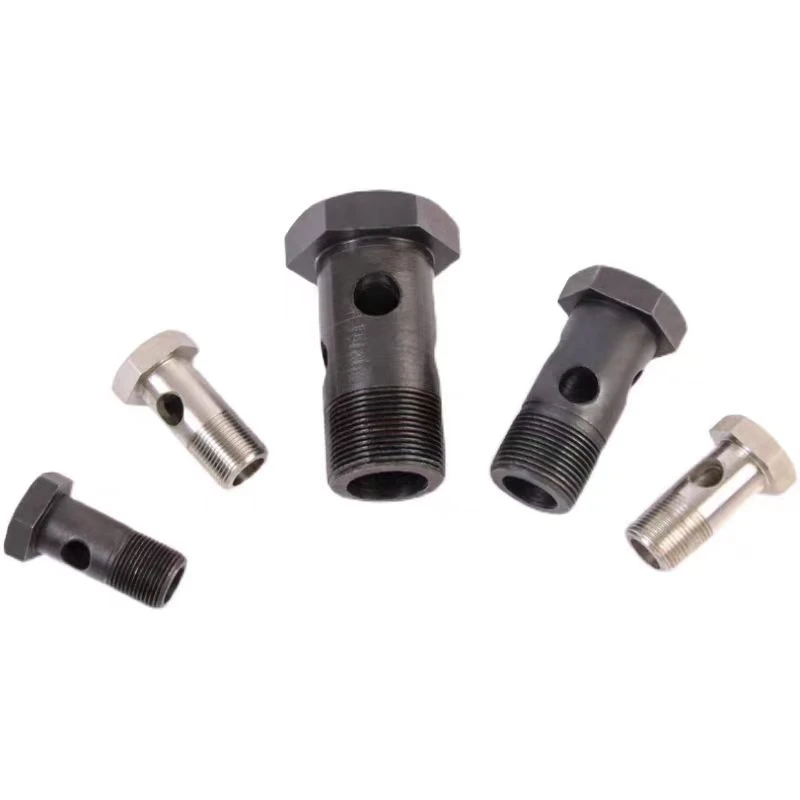

automotive flange nuts
Dec . 14, 2024 13:30 Back to list
automotive flange nuts
The Importance of Automotive Flange Nuts in Vehicle Assembly
In the world of automotive engineering, the significance of every component, no matter how small, can never be overstated. One such component that plays a crucial role in ensuring the structural integrity and performance of vehicles is the flange nut. Automotive flange nuts are specially designed fasteners that consist of a nut with a wide flange at one end. They are used extensively in various applications within vehicles, from assembly to repairs.
What are Flange Nuts?
Flange nuts are essentially hexagonal nuts that feature a circular, flat protrusion (the flange) on one side. This flange serves two primary purposes it provides a larger bearing surface and helps to distribute the load more evenly, reducing the likelihood of damage to the materials being fastened. Additionally, the flange nut typically has a serrated or non-serrated surface that enhances grip and prevents slippage, thereby ensuring that the nut remains securely in place even under vibration and stress.
Applications in Automotive Systems
In automotive assembly, flange nuts are utilized in a variety of systems. They are commonly found in the assembly of the chassis, suspension components, and even in the engine compartment. For example, they are used to attach brackets, align components, and secure parts such as the exhaust system or transmission. Their ability to provide a stable and secure connection makes them an ideal choice for automotive applications where reliability is essential.
One of the key advantages of using flange nuts is their effectiveness in reducing the number of components needed in a fastening system. Because the flange inherently provides a larger contact area, it minimizes the risks associated with traditional nuts, which may require additional washers to distribute the load properly. This not only simplifies the assembly process but also reduces the overall weight of the vehicle, which is becoming increasingly important in the drive toward fuel efficiency and sustainability.
Manufacturing and Material Considerations
automotive flange nuts

Automotive flange nuts are typically manufactured from high-strength materials such as steel, stainless steel, or alloys, ensuring they can withstand the harsh conditions often encountered in vehicles. The surface finish of these nuts is also crucial; many are coated with materials such as zinc or other protective finishes to prevent corrosion, especially in environments where they are exposed to moisture and other corrosive elements.
The manufacturing process of flange nuts requires precision, as the flanges must be uniform to maintain consistent load distribution. Moreover, the threads must be cut accurately to ensure they can be easily installed and removed throughout the life of the vehicle. Quality control measures in the production process are vital to ensure that these fasteners meet the stringent standards set by automotive manufacturers.
Impact on Vehicle Performance and Safety
The use of high-quality flange nuts can significantly impact vehicle performance and safety. Loose or improperly secured nuts can lead to severe consequences, such as the failure of critical components, which may ultimately compromise the safety of the vehicle and its occupants. Regular inspections and maintenance that include checking the condition of flange nuts are essential to ensure they remain in optimal working condition.
Moreover, the introduction of advanced technologies such as robotics and automated torque tools in assembly lines has elevated the standards for flange nut application. These technologies help achieve consistent torque specifications, further ensuring that these crucial fasteners perform their intended function effectively.
Conclusion
In conclusion, automotive flange nuts may appear to be simple components, but their role in vehicle assembly and performance is anything but trivial. They provide the necessary strength and reliability required in modern automotive engineering, contributing to the overall safety and efficiency of vehicles. As automotive technology continues to evolve, the design and manufacturing of flange nuts will also advance, incorporating new materials and manufacturing techniques to meet the demands of the industry. Understanding the importance of these small yet vital components can lead to better practices in vehicle design and maintenance, ultimately enhancing the driving experience for consumers worldwide.
Latest news
-
Hot Dip Galvanized Bolts-About LongZe|High Strength, Corrosion Resistance
NewsJul.30,2025
-
High-Strength Hot Dip Galvanized Bolts - Hebei Longze | Corrosion Resistance, Customization
NewsJul.30,2025
-
Hot Dip Galvanized Bolts-Hebei Longze|Corrosion Resistance&High Strength
NewsJul.30,2025
-
High-Strength Hot-Dip Galvanized Bolts-Hebei Longze|Corrosion Resistance&High Strength
NewsJul.30,2025
-
Hot Dip Galvanized Bolts-Hebei Longze|Corrosion Resistance&High Strength
NewsJul.30,2025
-
Hot Dip Galvanized Bolts - Hebei Longze | Corrosion Resistance, High Strength
NewsJul.30,2025

